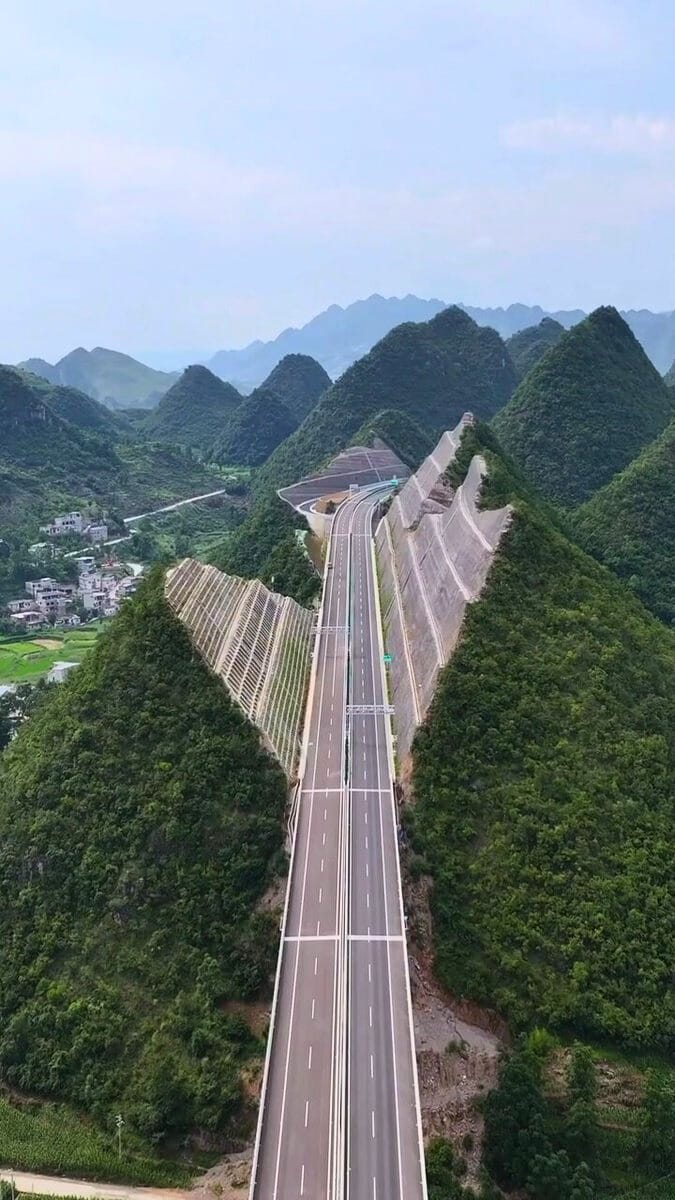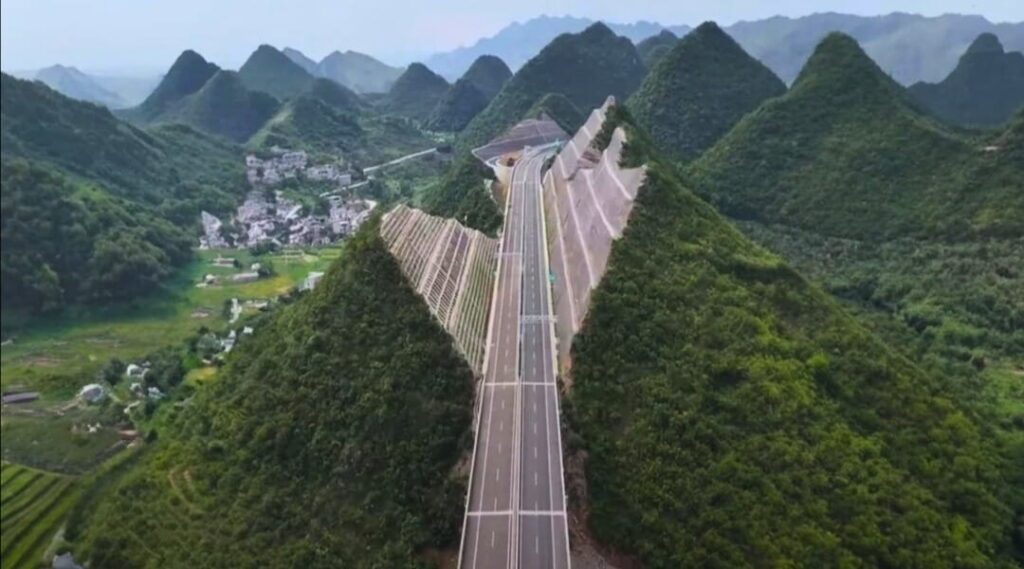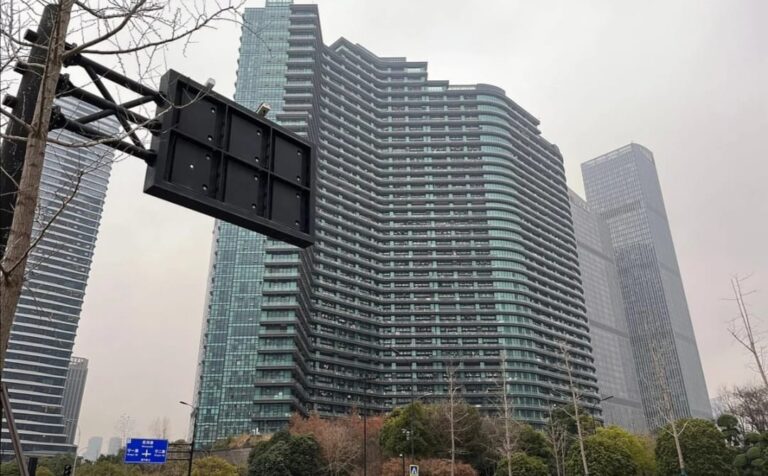Deep in the mountains of Guizhou Province, China has unveiled one of the most daring engineering projects in modern history. The Huajiang Grand Canyon Bridge, now the tallest bridge in the world, rises 625 meters above the river below.
But what truly sets it apart? To anchor the suspension towers, engineers literally split a mountain in half — cutting through solid stone to reshape the landscape forever.
What Makes the Huajiang Bridge Unique?
Unlike most suspension bridges that curve around or above natural formations, this bridge required engineers to blast through dense rock using controlled explosives.
This vertical cut carved a precise gorge into the mountain’s side, creating a foundation strong enough to withstand nearly 3 kilometers of tensioned steel cables.
The result is a breathtaking structure that doesn’t go around nature — it confronts it.

The Challenge of Building in Guizhou
Guizhou Province is famous for its steep cliffs and deep valleys. For centuries, travel between villages meant winding, dangerous roads that could take over an hour.
Now, thanks to the Huajiang Bridge, the same journey takes just one minute. For residents, the change is more than convenience — it is transformation.
“It’s hard to believe that the mountain we grew up seeing every day is now part of something that connects the entire region.” — Zhang Wei, Huajiang Resident






